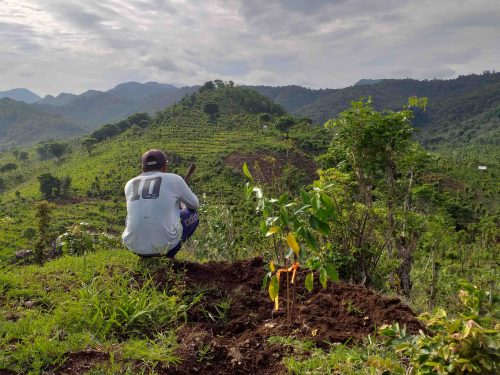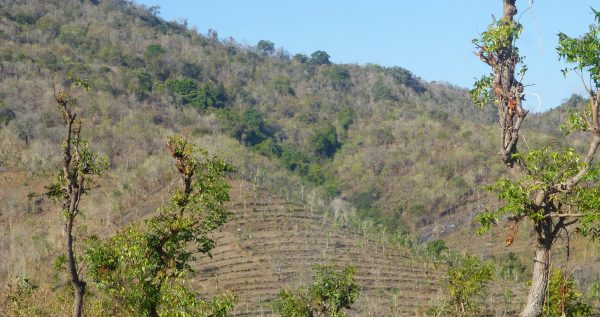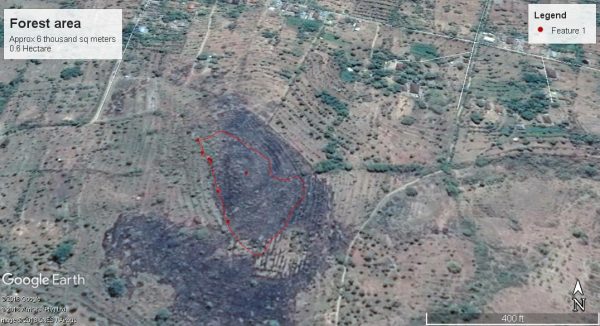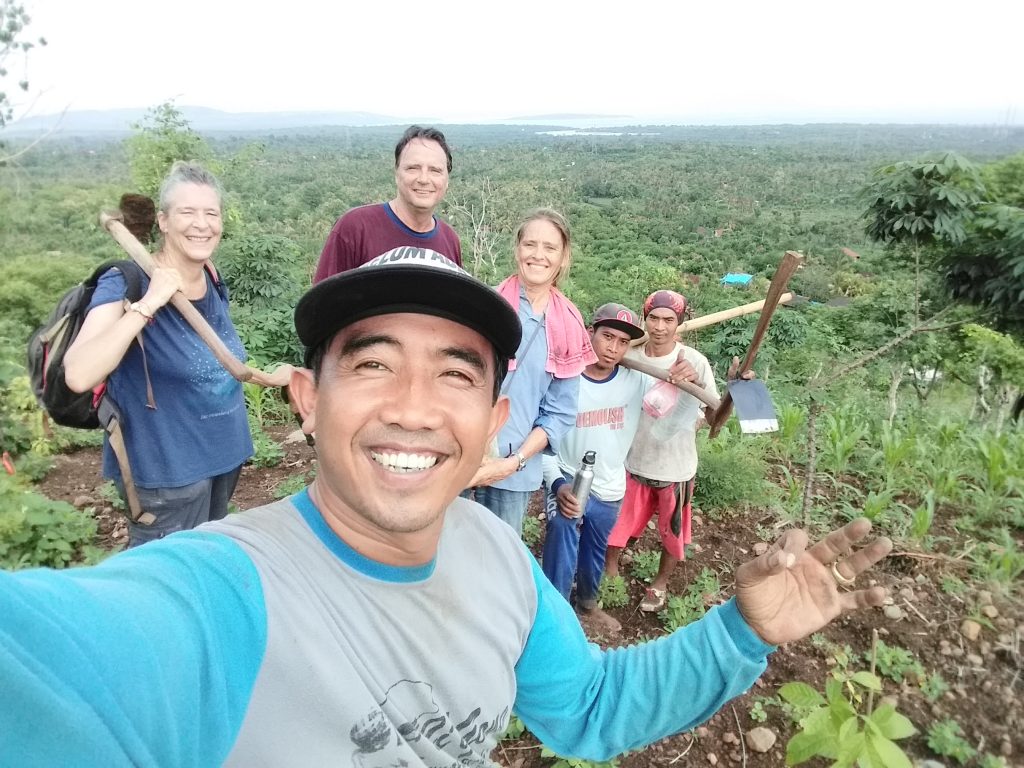Bukit Indah – A Monsoon Forest Restoration Project
In 2018 we began a new project behind Pejarakan village (NW Bali) locally known as the ‘production forest.’This area, about 10,000 hectares of steep sloping land, constitutes the main watershed of the village. The original intention of the production forest was to provide a forested buffer zone for the National Park, while at the same time providing local farmers with land to make an income. Farmers are permitted to farm there, providing they plant 1,300 trees per hectare, of which 10% have to be endemic. The farmers are also allowed to grow understory crops until the trees reach full maturity and the land below is too shaded to grow crops.
The current reality of the situation is that the farmers are using the area to raise corn, chili and peanut (all full sun crops), while the trees are doing poorly due to heavy pruning for additional fodder. The crops have improved the farmers wealth, but due to erosion over the years, the soil quality is decreasing rapidly and there is an increased use of chemical pesticides and fertilizers.
The local farmers have begun to see the deterioration of the land. Many areas, especially the hill tops, have become marginal and been abandoned. After many years of talking with the farmers about the situation in the production forest, a group of 10 farmers (who have permits to use an area of half a hectare of hilltop) came to Biosphere Foundation asking for help with reforesting the area.
As the initiative has come from the farmers themselves, it has some chance of succeeding, and so we are able to put to use everything we have learned about reforestation in the area to helping them design the project. The farmers have formed themselves into an official Kelompok (local community action group). They have called themselves Bukit Indah (beautiful hill) and have agreed not to harvest the trees for cattle food or wood. Biosphere Foundation is also providing a nursery area for raising endemic tree seedlings and funds for labor costs.

Pak Ketut Sarka, our friend and colleague who is also a local farmer, is heading up this effort. He has an excellent understanding of water catchment issues and the importance of reforestation. We have also obtained advise from Pak Putu Dogler a local forest expert with superb knowledge of the endemic tress of the area to advise us which are the best trees to plant and to help obtain the seeds and cuttings that are needed. Selection of the correct trees is paramount. They have to be extremely drought resistant and have a rapid growth.
In 2018 we mapped the area and surveyed the existing trees. In that process we realized that many of the existing trees can grow back if left alone (e.g. not continually harvested for cattle food), which will provide about 30% of the trees needed already in place. For the rest, we built a nursery and started with 1000 seedlings as well as 2,000 trees from our Yayasan Biosfir Indonesia partner who secured them from a government nursery. These trees will be planted over the course of the rainy season and monitored throughout the year.
The plan is to continue to reforest areas such as abandoned bare hilltops that are no longer being used for agriculture and also to gradually introduce improved agroforestry techniques for the agricultural land. This will involve:
- Restructuring the landscaping on steep slopes to improve water catchment using ditch and berm techniques.
- Alley cropping along the berms with a mixture of native hardwoods and fodder trees.
This is a long term project which will impact the health of the watershed that feeds the area of Pejarakan.





